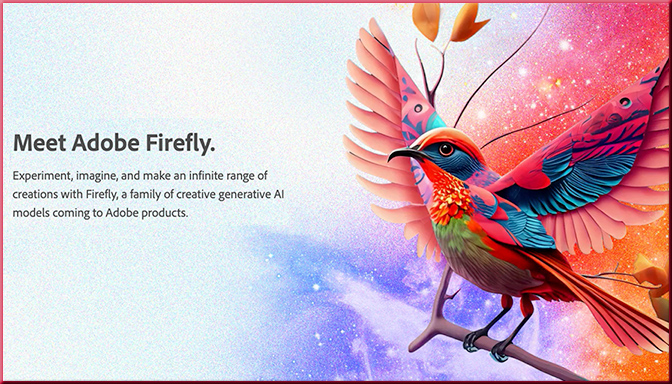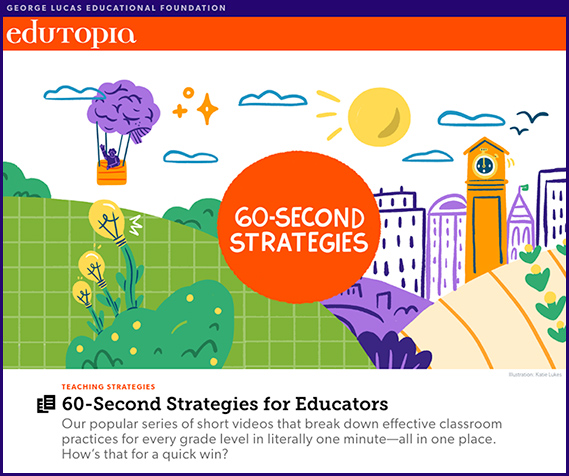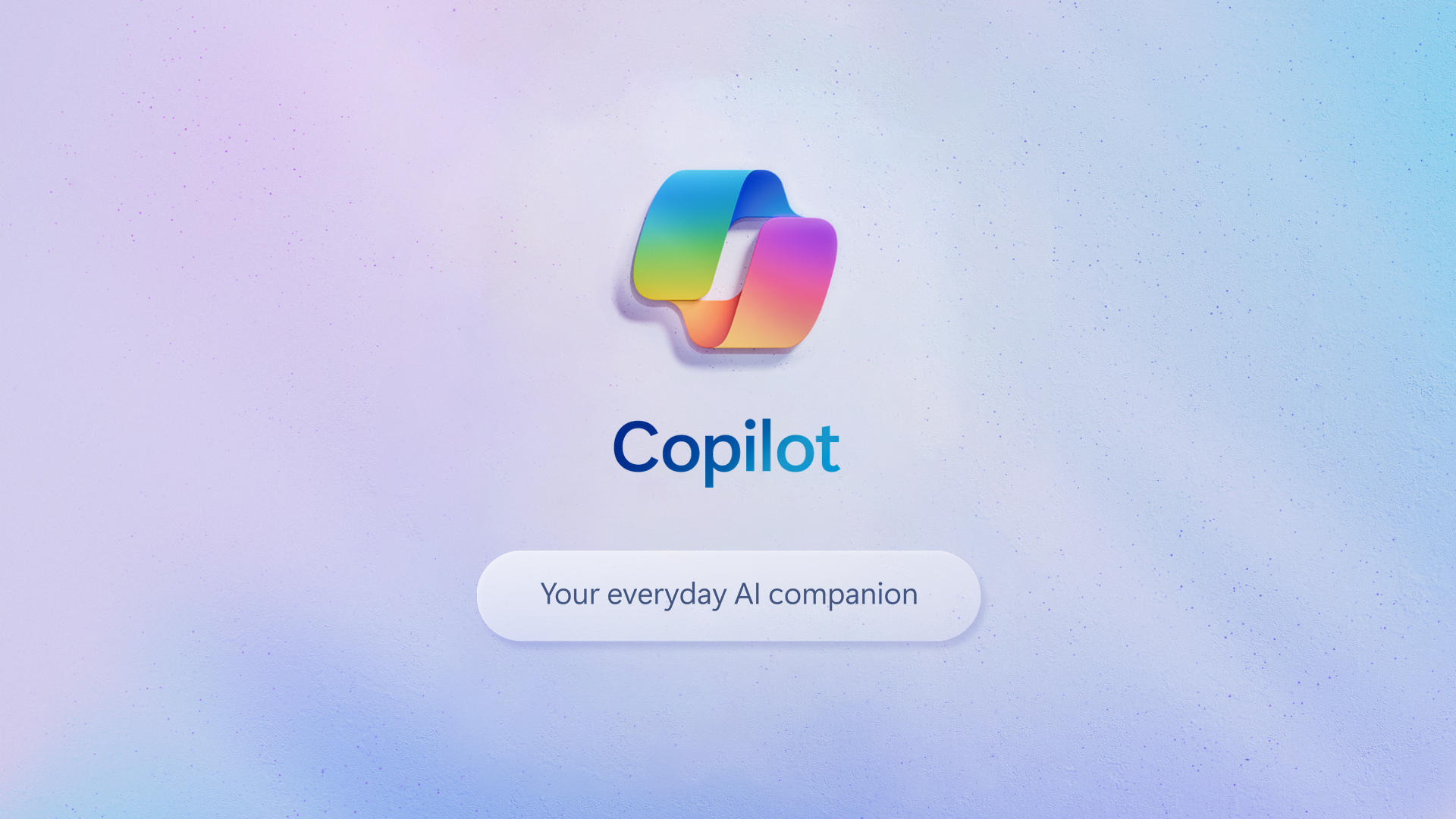From DSC:
Interesting fodder for thought, for sure. Thanks Stefan.
The Learning & Employment Records (LER) Ecosystem Map — with thanks to Melanie Booth on LinkedIn for this resource
Driving Opportunity and Equity Through Learning & Employment Records
Imagine A World Where…
- Everyone is empowered to access learning and earning opportunities based on what they know and can do, whether those skills and abilities are obtained through degrees, work experiences, or independent learning.
- People can capture and communicate the skills and competencies they’ve acquired across their entire learning journey — from education, experience and service — with more ease, confidence, and clarity than a traditional resume.
- Learners and earners control their information and can curate their skills to take advantage of every opportunity they are truly qualified to pursue, opening up pathways that help address systemic inequities.
- Employers can tap into a wider talent pool and better match applicants to opportunities with verifiable credentials that represent skills, competencies, and achievements.
This is the world that we believe can be created by Learning and Employment Records (LERs), i.e. digital records of learning and work experiences that are linked to and controlled by learners and earners. An interoperable, well-governed LER ecosystem has the potential to transform the future of work so that it is more equitable, efficient, and effective for everyone involved— individuals, training and education providers, employers, and policymakers.
Also per Melanie Booth, see:
- Research Reveals Growing Demand to Connect Academic Learning to Careers — from campustechnology.com Kristal Kuykendall
Skills-Based Learning, Certifications, Apprenticeships Top Priorities for Students, Global Survey Shows
. - State of Student Success and Engagement in Higher Education — from instructure.com
WHAT WAS GARY MARCUS THINKING, IN THAT INTERVIEW WITH GEOFF HINTON? — from linkedin.com by Stephen Downes
Background (emphasis DSC): 60 Minutes did an interview with ‘the Godfather of AI’, Geoffrey Hinton. In response, Gary Marcus wrote a column in which he inserted his own set of responses into the transcript, as though he were a panel participant. Neat idea. So, of course, I’m stealing it, and in what follows, I insert my own comments as I join the 60 Minutes panel with Geoffrey Hinton and Gary Marcus.
Usually I put everyone else’s text in italics, but for this post I’ll put it all in normal font, to keep the format consistent.
OpenAI’s Revenue Skyrockets to $1.3 Billion Annualized Rate — from maginative.com by Chris McKay
This means the company is generating over $100 million per month—a 30% increase from just this past summer.
OpenAI, the company behind the viral conversational AI ChatGPT, is experiencing explosive revenue growth. The Information reports that CEO Sam Altman told the staff this week that OpenAI’s revenue is now crossing $1.3 billion on an annualized basis. This means the company is generating over $100 million per month—a 30% increase from just this past summer.
Since the launch of a paid version of ChatGPT in February, OpenAI’s financial growth has been nothing short of meteoric. Additionally, in August, the company announced the launch of ChatGPT Enterprise, a commercial version of its popular conversational AI chatbot aimed at business users.
For comparison, OpenAI’s total revenue for all of 2022 was just $28 million. The launch of ChatGPT has turbocharged OpenAI’s business, positioning it as a bellwether for demand for generative AI.
The State of AI Report 2023 is live!
Check it out here to learn about key AI developments in research, industry, politics, safety, and predictions for what’s next.
Produced by @nathanbenaich and @airstreet team. #stateofai @stateofaireport https://t.co/pkTPwbrI5f
— Daniel Christian (he/him/his) (@dchristian5) October 15, 2023
From 10/13:
Insane amounts of AI news came out this week (most of it from Adobe).
Here are the timestamps from this video just to give you an idea:
0:00 Intro
0:40 Firefly Image 2
0:53 Adobe Premiere AI Updates
1:17 Adobe Text-To-Vector
3:37 Project Fast Fill
4:46 Project Draw and Delight… pic.twitter.com/tWzyA788yH— Matt Wolfe (@mreflow) October 13, 2023
New ways to get inspired with generative AI in Search — from blog.google
We’re testing new ways to get more done right from Search, like the ability to generate imagery with AI or creating the first draft of something you need to write.

Thinking with Colleagues: AI in Education — from campustechnology.com by Mary Grush
A Q&A with Ellen Wagner
Wagner herself recently relied on the power of collegial conversations to probe the question: What’s on the minds of educators as they make ready for the growing influence of AI in higher education? CT asked her for some takeaways from the process.
We are in the very early days of seeing how AI is going to affect education. Some of us are going to need to stay focused on the basic research to test hypotheses. Others are going to dive into laboratory “sandboxes” to see if we can build some new applications and tools for ourselves. Still others will continue to scan newsletters like ProductHunt every day to see what kinds of things people are working on. It’s going to be hard to keep up, to filter out the noise on our own. That’s one reason why thinking with colleagues is so very important.
Mary and Ellen linked to “What Is Top of Mind for Higher Education Leaders about AI?” — from northcoasteduvisory.com. Below are some excerpts from those notes:
We are interested how K-12 education will change in terms of foundational learning. With in-class, active learning designs, will younger students do a lot more intensive building of foundational writing and critical thinking skills before they get to college?
- The Human in the Loop: AI is built using math: think of applied statistics on steroids. Humans will be needed more than ever to manage, review and evaluate the validity and reliability of results. Curation will be essential.
- We will need to generate ideas about how to address AI factors such as privacy, equity, bias, copyright, intellectual property, accessibility, and scalability.
- Have other institutions experimented with AI detection and/or have held off on emerging tools related to this? We have just recently adjusted guidance and paused some tools related to this given the massive inaccuracies in detection (and related downstream issues in faculty-elevated conduct cases)
Even though we learn repeatedly that innovation has a lot to do with effective project management and a solid message that helps people understand what they can do to implement change, people really need innovation to be more exciting and visionary than that. This is the place where we all need to help each other stay the course of change.
Along these lines, also see:
What people ask me most. Also, some answers. — from oneusefulthing.org by Ethan Mollick
A FAQ of sorts
I have been talking to a lot of people about Generative AI, from teachers to business executives to artists to people actually building LLMs. In these conversations, a few key questions and themes keep coming up over and over again. Many of those questions are more informed by viral news articles about AI than about the real thing, so I thought I would try to answer a few of the most common, to the best of my ability.
I can’t blame people for asking because, for whatever reason, the companies actually building and releasing Large Language Models often seem allergic to providing any sort of documentation or tutorial besides technical notes. I was given much better documentation for the generic garden hose I bought on Amazon than for the immensely powerful AI tools being released by the world’s largest companies. So, it is no surprise that rumor has been the way that people learn about AI capabilities.
Currently, there are only really three AIs to consider: (1) OpenAI’s GPT-4 (which you can get access to with a Plus subscription or via Microsoft Bing in creative mode, for free), (2) Google’s Bard (free), or (3) Anthropic’s Claude 2 (free, but paid mode gets you faster access). As of today, GPT-4 is the clear leader, Claude 2 is second best (but can handle longer documents), and Google trails, but that will likely change very soon when Google updates its model, which is rumored to be happening in the near future.
DC: Reminds me of an upcoming “feature” I just read about. Trust is already a fragile thing. Are we sure we want this?!
A person’s image & voice can already be mimicked. Now add their communications to the growing list as well?
“Just because we can…”https://t.co/D4t8QHmbeO
— Daniel Christian (he/him/his) (@dchristian5) October 11, 2023
Next month Microsoft Corp. will start making its artificial intelligence features for Office widely available to corporate customers. Soon after, that will include the ability for it to read your emails, learn your writing style and compose messages on your behalf.
From DSC:
As readers of this blog know, I’m generally pro-technology. I see most technologies as tools — which can be used for good or for ill. So I will post items both pro and con concerning AI.
But outsourcing email communications to AI isn’t on my wish list or to-do list.
The Public Is Giving Up on Higher Ed — from chronicle.com by Michael D. Smith
Our current system isn’t working for society. Digital alternatives can change that.
Excerpts:
I fear that we in the academy are willfully ignoring this problem. Bring up student-loan debt and you’ll hear that it’s the government’s fault. Bring up online learning and you’ll hear that it is — and always will be — inferior to in-person education. Bring up exclusionary admissions practices and you’ll hear something close to, “Well, the poor can attend community colleges.”
On one hand, our defensiveness is natural. Change is hard, and technological change that risks making traditional parts of our sector obsolete is even harder. “A professor must have an incentive to adopt new technology,” a tenured colleague recently told me regarding online learning. “Innovation adoption will occur one funeral at a time.”
But while our defense of the status quo is understandable, maybe we should ask whether it’s ethical, given what we know about the injustice inherent in our current system. I believe a happier future for all involved — faculty, administrators, and students — is within reach, but requires we stop reflexively protecting our deeply flawed system. How can we do that? We could start by embracing three fundamental principles.
1. Digitization will change higher education.
…
2. We should want to embrace this change.
…
3. We have a way to embrace this change.
I fear that we in the academy are willfully ignoring this problem. Bring up student-loan debt and you’ll hear that it’s the government’s fault. Bring up online learning and you’ll hear that it is — and always will be — inferior to in-person education. Bring up exclusionary admissions practices and you’ll hear something close to, “Well, the poor can attend community colleges.”
The Legal Tech Ecosystem: Innovation, Advancement & the Future of Law Practice — by Colin Levy (Author), Tatia Gordon-Troy (Editor), Bjarne Tellman (Foreword)
The legal landscape is evolving at an unprecedented pace, with the seismic shifts of recent years demanding a fresh perspective on the role of technology and innovation within the legal profession. The Legal Tech Ecosystem delves into this essential transformation, shedding light on the crucial interplay between law and technology in today’s complex world.
At its core, this book addresses the profound changes unfolding in the legal domain, driven by macro-economic forces. These changes have placed an ever-increasing burden on legal departments to accomplish more with fewer resources. A quartet of pillars—the explosive growth of regulations, the challenges posed by globalization, the convergence of risk dimensions, and the pressure on corporate profits—has created an environment where legal professionals must adapt swiftly to succeed.
Canva’s new AI tools automate boring, labor-intensive design tasks — from theverge.com by Jess Weatherbed
Magic Studio features like Magic Switch automatically convert your designs into blogs, social media posts, emails, and more to save time on manually editing documents.
Canva launches Magic Studio, partners with Runway ML for video — from bensbites.beehiiv.com by Ben Tossell
Here are the highlights of launched features under the new Magic Studio:
- Magic Design – Turn ideas into designs instantly with AI-generated templates.
- Magic Switch – Transform content into different formats and languages with one click.
- Magic Grab – Make images editable like Canva templates for easy editing.
- Magic Expand – Use AI to expand images beyond the original frame.
- Magic Morph – Transform text and shapes with creative effects and prompts.
- Magic Edit – Make complex image edits using simple text prompts.
- Magic Media – Generate professional photos, videos and artworks from text prompts.
- Magic Animate – Add animated transitions and motion to designs instantly.
- Magic Write – Generate draft text and summaries powered by AI.
Addendums on 10/11/23:
We released a new model ?
!!! Firefly Image 2 !!!!
As a scientist I am in disbelief that such model is possible with a small dataset as we had.
We compensated artists for training it.
We worked very hard on it. Please, enjoy! #AdobeMax https://t.co/j2TUiiyjN7 pic.twitter.com/gqABThSBWZ
— Kris Kashtanova (@icreatelife) October 10, 2023
Adobe Releases New AI Models Aimed at Improved Graphic Design — from bloomberg.com
New version of Firefly is bigger than initial tool, Adobe says Illustrator, Express programs each get own generative tools
A few hours ago, Adobe released Firefly 2, their new AI image generator.
But how good is it?
I compared it to Midjourney & DALL-E 3 across 10 very different image categories so you don’t have to.
Here are the results:
— Chase Lean (@chaseleantj) October 11, 2023
As AI Chatbots Rise, More Educators Look to Oral Exams — With High-Tech Twist — from edsurge.com by Jeffrey R. Young
To use Sherpa, an instructor first uploads the reading they’ve assigned, or they can have the student upload a paper they’ve written. Then the tool asks a series of questions about the text (either questions input by the instructor or generated by the AI) to test the student’s grasp of key concepts. The software gives the instructor the choice of whether they want the tool to record audio and video of the conversation, or just audio.
The tool then uses AI to transcribe the audio from each student’s recording and flags areas where the student answer seemed off point. Teachers can review the recording or transcript of the conversation and look at what Sherpa flagged as trouble to evaluate the student’s response.
Humane’s ‘Ai Pin’ debuts on the Paris runway — from techcrunch.com by Brian Heater
“The [Ai Pin is a] connected and intelligent clothing-based wearable device uses a range of sensors that enable contextual and ambient compute interactions,” the company noted at the time. “The Ai Pin is a type of standalone device with a software platform that harnesses the power of Ai to enable innovative personal computing experiences.”
Also relevant/see:
Introducing Rewind Pendant – a wearable that captures what you say and hear in the real world!
? Rewind powered by truly everything you’ve seen, said, or heard
? Summarize and ask any question using AI
? Private by designLearn more & preorder: https://t.co/UPqACrlzej pic.twitter.com/1qwjto3OGT
— Dan Siroker (@dsiroker) October 2, 2023
ChatGPT breaks down this diagram of a human cell for a 9th grader.
This is the future of education. pic.twitter.com/L0Za0ZB5rs
— Mckay Wrigley (@mckaywrigley) September 28, 2023
The first GPT-4V-powered frontend engineer agent.
Just upload a picture of a design, and the agent autonomously codes it up, looks at a render for mistakes, improves the code accordingly, repeat.
Utterly insane. pic.twitter.com/qN75vwkbDZ
— Matt Shumer (@mattshumer_) September 29, 2023
AI Meets Med School— from insidehighered.com by Lauren Coffey
Adding to academia’s AI embrace, two institutions in the University of Texas system are jointly offering a medical degree paired with a master’s in artificial intelligence.

The University of Texas at San Antonio has launched a dual-degree program combining medical school with a master’s in artificial intelligence.
Several universities across the nation have begun integrating AI into medical practice. Medical schools at the University of Florida, the University of Illinois, the University of Alabama at Birmingham and Stanford and Harvard Universities all offer variations of a certificate in AI in medicine that is largely geared toward existing professionals.
“I think schools are looking at, ‘How do we integrate and teach the uses of AI?’” Dr. Whelan said. “And in general, when there is an innovation, you want to integrate it into the curriculum at the right pace.”
Speaking of emerging technologies and med school, also see:
- From Static Images To Immersive Experiences: VR’s Role In Medical Education — from forbes.com by Sergei Vardomatski
Though not necessarily edu-related, this was interesting to me and hopefully will be to some profs and/or students out there:
Wait, what?
Chat GPT-4V vision just directed a full-on product photography shoot for Halloween and Christmas!
It even gave me feedback ? pic.twitter.com/LiajGZrA0N
— Salma – Midjourney & SD AI Product Photographer (@Salmaaboukarr) September 29, 2023
How to stop AI deepfakes from sinking society — and science — from nature.com by Nicola Jones; via The Neuron
Deceptive videos and images created using generative AI could sway elections, crash stock markets and ruin reputations. Researchers are developing methods to limit their harm.
48+ hours since Chat GPT-4V has started rolling out for Plus and enterprise users.
Incredible use cases and potential.
10 of the best examples I’ve seen. So far…
— Alie Jules (@saana_ai) September 29, 2023
GPT-4V gives us a glimpse of the future, but ~GPT-5V~ will take us there.
Think of GPT-4V like GPT-3. Good for demos, and usable for a small set of real-world problems, but brittle.
GPT-3 paved the way for the much more reliable GPT-4. https://t.co/mpK9ZCElW1
— Matt Shumer (@mattshumer_) September 29, 2023
A couple things happened in the world of AI this week. Here’s my TLDR (which is getting so long it’ll need its own TLDR pretty soon):
– ChatGPT going multi-modal
– ChatGPT brings back the “browse” functionality
– OpenAI and Jony Ive working on iPhone for AI
– Anthropic partners…— Matt Wolfe (@mreflow) October 1, 2023
Exploring the Impact of AI in Education with PowerSchool’s CEO & Chief Product Officer — from michaelbhorn.substack.com by Michael B. Horn
With just under 10 acquisitions in the last 5 years, PowerSchool has been active in transforming itself from a student information systems company to an integrated education company that works across the day and lifecycle of K–12 students and educators. What’s more, the company turned heads in June with its announcement that it was partnering with Microsoft to integrate AI into its PowerSchool Performance Matters and PowerSchool LearningNav products to empower educators in delivering transformative personalized-learning pathways for students.
AI Learning Design Workshop: The Trickiness of AI Bootcamps and the Digital Divide — from eliterate.usby Michael Feldstein
As readers of this series know, I’ve developed a six-session design/build workshop series for learning design teams to create an AI Learning Design Assistant (ALDA). In my last post in this series, I provided an elaborate ChatGPT prompt that can be used as a rapid prototype that everyone can try out and experiment with.1 In this post, I’d like to focus on how to address the challenges of AI literacy effectively and equitably.
Global AI Legislation Tracker— from iapp.org; via Tom Barrett
Countries worldwide are designing and implementing AI governance legislation commensurate to the velocity and variety of proliferating AI-powered technologies. Legislative efforts include the development of comprehensive legislation, focused legislation for specific use cases, and voluntary guidelines and standards.
This tracker identifies legislative policy and related developments in a subset of jurisdictions. It is not globally comprehensive, nor does it include all AI initiatives within each jurisdiction, given the rapid and widespread policymaking in this space. This tracker offers brief commentary on the wider AI context in specific jurisdictions, and lists index rankings provided by Tortoise Media, the first index to benchmark nations on their levels of investment, innovation and implementation of AI.
Diving Deep into AI: Navigating the L&D Landscape — from learningguild.com by Markus Bernhardt
The prospect of AI-powered, tailored, on-demand learning and performance support is exhilarating: It starts with traditional digital learning made into fully adaptive learning experiences, which would adjust to strengths and weaknesses for each individual learner. The possibilities extend all the way through to simulations and augmented reality, an environment to put into practice knowledge and skills, whether as individuals or working in a team simulation. The possibilities are immense.
“AI is real”
JPMorgan CEO Jamie Dimon says artificial intelligence will be part of “every single process,” adding it’s already “doing all the equity hedging for us” https://t.co/EtsTbiME1a pic.twitter.com/J9YD4slOpv
— Bloomberg (@business) October 2, 2023
Learning Lab | ChatGPT in Higher Education: Exploring Use Cases and Designing Prompts — from events.educause.edu; via Robert Gibson on LinkedIn
Part 1: October 16 | 3:00–4:30 p.m. ET
Part 2: October 19 | 3:00–4:30 p.m. ET
Part 3: October 26 | 3:00–4:30 p.m. ET
Part 4: October 30 | 3:00–4:30 p.m. ET
Mapping AI’s Role in Education: Pioneering the Path to the Future — from marketscale.com by Michael B. Horn, Jacob Klein, and Laurence Holt
Welcome to The Future of Education with Michael B. Horn. In this insightful episode, Michael gains perspective on mapping AI’s role in education from Jacob Klein, a Product Consultant at Oko Labs, and Laurence Holt, an Entrepreneur In Residence at the XQ Institute. Together, they peer into the burgeoning world of AI in education, analyzing its potential, risks, and roadmap for integrating it seamlessly into learning environments.
Ten Wild Ways People Are Using ChatGPT’s New Vision Feature — from newsweek.com by Meghan Roos; via Superhuman
Below are 10 creative ways ChatGPT users are making use of this new vision feature.
Comparing Online and AI-Assisted Learning: A Student’s View — from educationnext.org by Daphne Goldstein
An 8th grader reviews traditional Khan Academy and its AI-powered tutor, Khanmigo
Hi everyone, I’m Daphne, a 13-year-old going into 8th grade.
I’m writing to compare “regular” Khan Academy (no AI) to Khanmigo (powered by GPT4), using three of my own made-up criteria.
They are: efficiency, effectiveness, and enjoyability. Efficiency is how fast I am able to cover a math topic and get basic understanding. Effectiveness is my quality of understanding—the difference between basic and advanced understanding. And the final one—most important to kids and maybe least important to adults who make kids learn math—is enjoyability.
7 Questions on Generative AI in Learning Design — from campustechnology.com by Rhea Kelly
Open LMS Adoption and Education Specialist Michael Vaughn on the challenges and possibilities of using artificial intelligence to move teaching and learning forward.
The potential for artificial intelligence tools to speed up course design could be an attractive prospect for overworked faculty and spread-thin instructional designers. Generative AI can shine, for example, in tasks such as reworking assessment question sets, writing course outlines and learning objectives, and generating subtitles for audio and video clips. The key, says Michael Vaughn, adoption and education specialist at learning platform Open LMS, is treating AI like an intern who can be guided and molded along the way, and whose work is then vetted by a human expert.
We spoke with Vaughn about how best to utilize generative AI in learning design, ethical issues to consider, and how to formulate an institution-wide policy that can guide AI use today and in the future.
First Impressions with GPT-4V(ision) — from blog.roboflow.com by James Gallagher; via Donald Clark on LinkedIn
On September 25th, 2023, OpenAI announced the rollout of two new features that extend how people can interact with its recent and most advanced model, GPT-4: the ability to ask questions about images and to use speech as an input to a query.
This functionality marks GPT-4’s move into being a multimodal model. This means that the model can accept multiple “modalities” of input – text and images – and return results based on those inputs. Bing Chat, developed by Microsoft in partnership with OpenAI, and Google’s Bard model both support images as input, too. Read our comparison post to see how Bard and Bing perform with image inputs.
In this guide, we are going to share our first impressions with the GPT-4V image input feature.
.
8 Fall Activities for Kids With a Digital Spin — from classtechtips.com
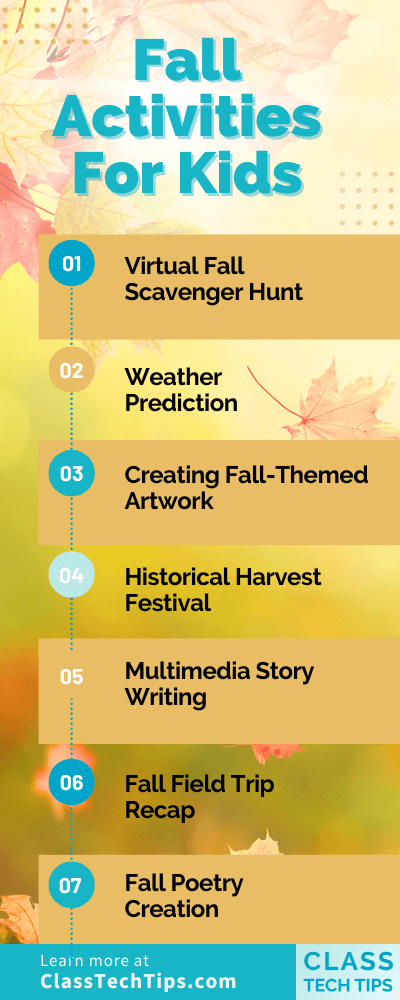
Redefining What High School Is Supposed to Look Like — from edutopia.org by Brittany R. Collins
From restorative grading to paid internships, an equity-centered approach to education creates rich learning opportunities for all students.
We have a networking party with special tables and food, and the students have to stand and mingle. We emulate this sort of a networking party, because they have to learn how to do it. They have to dress the part that day, and I film it so we can watch it back to give them some feedback.
Digital Promise Launches FutureLab to Investigate Transformative Approaches to Teaching and Learning — from digitalpromise.org
Digital Promise announced [on 9/26/23] the launch of the Digital Promise FutureLab. This cutting-edge initiative embodies Digital Promise’s long-standing dedication to innovation in education and aims to not only revolutionize the current state of education, but to reimagine a new world of learning.
FutureLab is funded in part by Digital Promise’s recent gift from MacKenzie Scott.
“Innovation is in Digital Promise’s DNA, and we are reaffirming our commitment to push the boundaries of what’s possible in education,” said Jean-Claude Brizard, President and CEO of Digital Promise. “We believe the Digital Promise FutureLab will be a catalyst for transformative change in education. It’s a significant opportunity to collaborate with visionary educators, technologists, and researchers to create a more equitable future for learners worldwide.”
Student Use Cases for AI: Start by Sharing These Guidelines with Your Class — from hbsp.harvard.edu by Ethan Mollick and Lilach Mollick
To help you explore some of the ways students can use this disruptive new technology to improve their learning—while making your job easier and more effective—we’ve written a series of articles that examine the following student use cases:
Recap: Teaching in the Age of AI (What’s Working, What’s Not) — from celt.olemiss.edu by Derek Bruff, visiting associate director
Earlier this week, CETL and AIG hosted a discussion among UM faculty and other instructors about teaching and AI this fall semester. We wanted to know what was working when it came to policies and assignments that responded to generative AI technologies like ChatGPT, Google Bard, Midjourney, DALL-E, and more. We were also interested in hearing what wasn’t working, as well as questions and concerns that the university community had about teaching and AI.
Teaching: Want your students to be skeptical of ChatGPT? Try this. — from chronicle.com by Beth McMurtrie
Then, in class he put them into groups where they worked together to generate a 500-word essay on “Why I Write” entirely through ChatGPT. Each group had complete freedom in how they chose to use the tool. The key: They were asked to evaluate their essay on how well it offered a personal perspective and demonstrated a critical reading of the piece. Weiss also graded each ChatGPT-written essay and included an explanation of why he came up with that particular grade.
After that, the students were asked to record their observations on the experiment on the discussion board. Then they came together again as a class to discuss the experiment.
Weiss shared some of his students’ comments with me (with their approval). Here are a few:
2023 EDUCAUSE Horizon Action Plan: Generative AI — from library.educause.edu by Jenay Robert and Nicole Muscanell
Asked to describe the state of generative AI that they would like to see in higher education 10 years from now, panelists collaboratively constructed their preferred future.
.
Will Teachers Listen to Feedback From AI? Researchers Are Betting on It — from edsurge.com by Olina Banerji
Julie York, a computer science and media teacher at South Portland High School in Maine, was scouring the internet for discussion tools for her class when she found TeachFX. An AI tool that takes recorded audio from a classroom and turns it into data about who talked and for how long, it seemed like a cool way for York to discuss issues of data privacy, consent and bias with her students. But York soon realized that TeachFX was meant for much more.
York found that TeachFX listened to her very carefully, and generated a detailed feedback report on her specific teaching style. York was hooked, in part because she says her school administration simply doesn’t have the time to observe teachers while tending to several other pressing concerns.
“I rarely ever get feedback on my teaching style. This was giving me 100 percent quantifiable data on how many questions I asked and how often I asked them in a 90-minute class,” York says. “It’s not a rubric. It’s a reflection.”
TeachFX is easy to use, York says. It’s as simple as switching on a recording device.
…
But TeachFX, she adds, is focused not on her students’ achievements, but instead on her performance as a teacher.
ChatGPT Is Landing Kids in the Principal’s Office, Survey Finds — from the74million.org by Mark Keierleber
While educators worry that students are using generative AI to cheat, a new report finds students are turning to the tool more for personal problems.
Indeed, 58% of students, and 72% of those in special education, said they’ve used generative AI during the 2022-23 academic year, just not primarily for the reasons that teachers fear most. Among youth who completed the nationally representative survey, just 23% said they used it for academic purposes and 19% said they’ve used the tools to help them write and submit a paper. Instead, 29% reported having used it to deal with anxiety or mental health issues, 22% for issues with friends and 16% for family conflicts.
Part of the disconnect dividing teachers and students, researchers found, may come down to gray areas. Just 40% of parents said they or their child were given guidance on ways they can use generative AI without running afoul of school rules. Only 24% of teachers say they’ve been trained on how to respond if they suspect a student used generative AI to cheat.
Embracing weirdness: What it means to use AI as a (writing) tool — from oneusefulthing.org by Ethan Mollick
AI is strange. We need to learn to use it.
But LLMs are not Google replacements, or thesauruses or grammar checkers. Instead, they are capable of so much more weird and useful help.
Diving Deep into AI: Navigating the L&D Landscape — from learningguild.com by Markus Bernhardt
The prospect of AI-powered, tailored, on-demand learning and performance support is exhilarating: It starts with traditional digital learning made into fully adaptive learning experiences, which would adjust to strengths and weaknesses for each individual learner. The possibilities extend all the way through to simulations and augmented reality, an environment to put into practice knowledge and skills, whether as individuals or working in a team simulation. The possibilities are immense.
Thanks to generative AI, such visions are transitioning from fiction to reality.
Video: Unleashing the Power of AI in L&D — from drphilippahardman.substack.com by Dr. Philippa Hardman
An exclusive video walkthrough of my keynote at Sweden’s national L&D conference this week
Highlights
- The wicked problem of L&D: last year, $371 billion was spent on workplace training globally, but only 12% of employees apply what they learn in the workplace
- An innovative approach to L&D: when Mastery Learning is used to design & deliver workplace training, the rate of “transfer” (i.e. behaviour change & application) is 67%
- AI 101: quick summary of classification, generative and interactive AI and its uses in L&D
- The impact of AI: my initial research shows that AI has the potential to scale Mastery Learning and, in the process:
- reduce the “time to training design” by 94% > faster
- reduce the cost of training design by 92% > cheaper
- increase the quality of learning design & delivery by 96% > better
- Research also shows that the vast majority of workplaces are using AI only to “oil the machine” rather than innovate and improve our processes & practices
- Practical tips: how to get started on your AI journey in your company, and a glimpse of what L&D roles might look like in a post-AI world
ChatGPT can now see, hear, and speak — from openai.com
We are beginning to roll out new voice and image capabilities in ChatGPT. They offer a new, more intuitive type of interface by allowing you to have a voice conversation or show ChatGPT what you’re talking about.
Voice and image give you more ways to use ChatGPT in your life. Snap a picture of a landmark while traveling and have a live conversation about what’s interesting about it. When you’re home, snap pictures of your fridge and pantry to figure out what’s for dinner (and ask follow up questions for a step by step recipe). After dinner, help your child with a math problem by taking a photo, circling the problem set, and having it share hints with both of you.
We’re rolling out voice and images in ChatGPT to Plus and Enterprise users over the next two weeks. Voice is coming on iOS and Android (opt-in in your settings) and images will be available on all platforms.
Use your voice to engage in a back-and-forth conversation with ChatGPT. Speak with it on the go, request a bedtime story, or settle a dinner table debate.
Sound on ? pic.twitter.com/3tuWzX0wtS
— OpenAI (@OpenAI) September 25, 2023
Speak in your voice in the listener’s language, not your own, using the latest @OpenAI voice synthesis technology. Great use-case by Spotify: https://t.co/GhDlNrZVqZ https://t.co/s6MLFGx7aR
— Greg Brockman (@gdb) September 25, 2023
ChatGPT can now browse the internet to provide you with current and authoritative information, complete with direct links to sources. It is no longer limited to data before September 2021. pic.twitter.com/pyj8a9HWkB
— OpenAI (@OpenAI) September 27, 2023
OpenAI Seeks New Valuation of Up to $90 Billion in Sale of Existing Shares — from wsj.com (behind paywall)
Potential sale would value startup at roughly triple where it was set earlier this year
The World’s First AI Cinema Experience Starring YOU Is Open In NZ And Buzzy Doesn’t Cover It — from theedge.co.nz by Seth Gupwell
Allow me to manage your expectations.
Because it’s the first-ever on Earth, it’s hard to label what kind of entertainment Hypercinema is. While it’s marketed as a “live AI experience” that blends “theatre, film and digital technology”, Dr. Gregory made it clear that it’s not here to make movies and TV extinct.
Your face and personality are how HyperCinema sets itself apart from the art forms of old. You get 15 photos of your face taken from different angles, then answer a questionnaire – mine started by asking what my fave vegetable was and ended by demanding to know what I thought the biggest threat to humanity was. Deep stuff, but the questions are always changing, cos that’s how AI rolls.
All of this information is stored on your cube – a green, glowing accessory that you carry around for the whole experience and insert into different sockets to transfer your info onto whatever screen is in front of you. Upon inserting your cube, the “live AI experience” starts.
The AI has taken your photos and superimposed your face on a variety of made-up characters in different situations.
Announcing Microsoft Copilot, your everyday AI companion — from blogs.microsoft.com by Yusuf Mehdi
We are entering a new era of AI, one that is fundamentally changing how we relate to and benefit from technology. With the convergence of chat interfaces and large language models you can now ask for what you want in natural language and the technology is smart enough to answer, create it or take action. At Microsoft, we think about this as having a copilot to help navigate any task. We have been building AI-powered copilots into our most used and loved products – making coding more efficient with GitHub, transforming productivity at work with Microsoft 365, redefining search with Bing and Edge and delivering contextual value that works across your apps and PC with Windows.
Today we take the next step to unify these capabilities into a single experience we call Microsoft Copilot, your everyday AI companion. Copilot will uniquely incorporate the context and intelligence of the web, your work data and what you are doing in the moment on your PC to provide better assistance – with your privacy and security at the forefront.
DALL·E 3 understands significantly more nuance and detail than our previous systems, allowing you to easily translate your ideas into exceptionally accurate images.
DALL·E 3 is now in research preview, and will be available to ChatGPT Plus and Enterprise customers in October, via the API and in Labs later this fall.









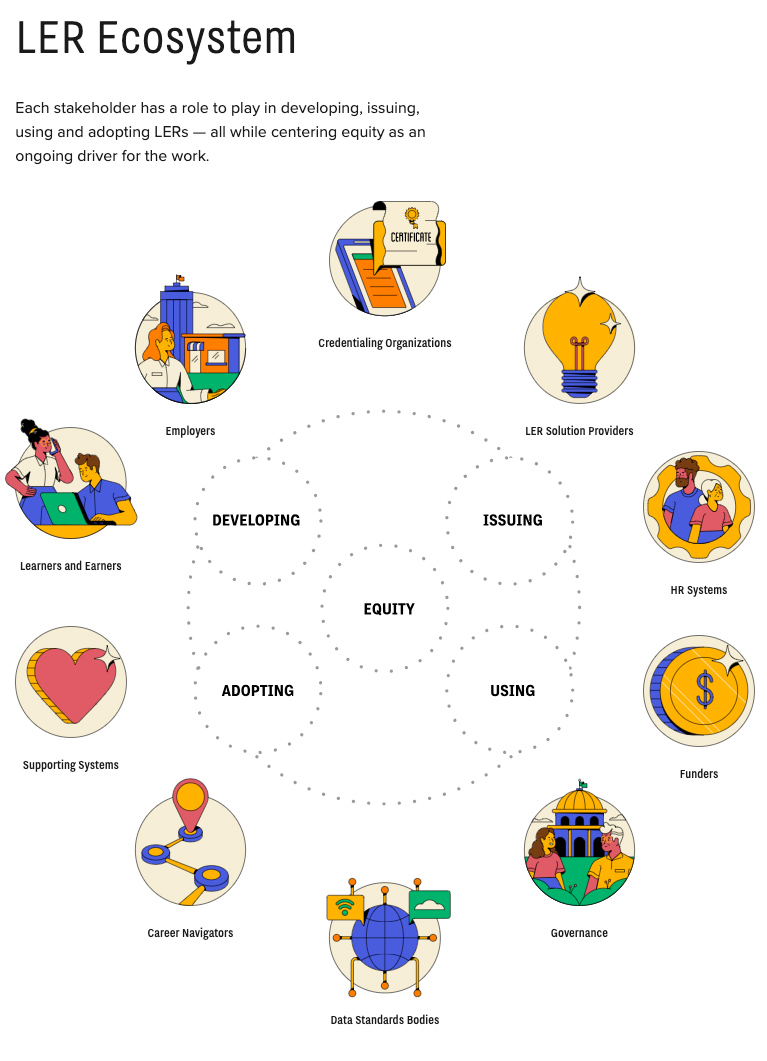
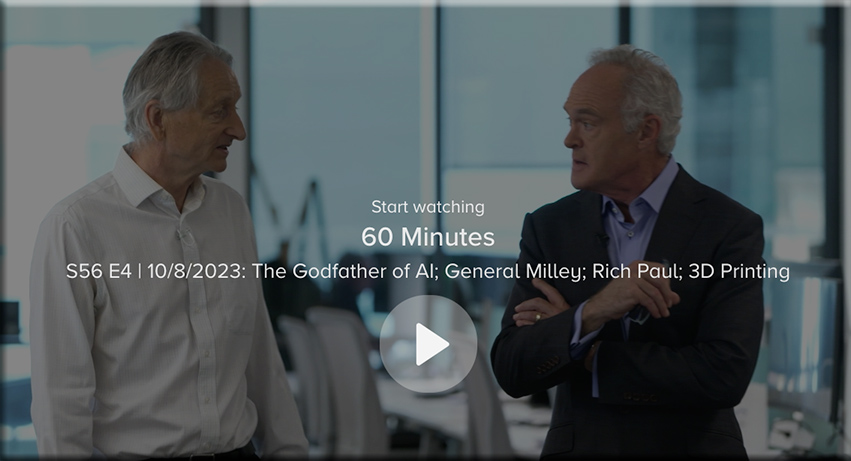

:format(webp)/cdn.vox-cdn.com/uploads/chorus_asset/file/24976021/Canva_Magic_Studio.png)
